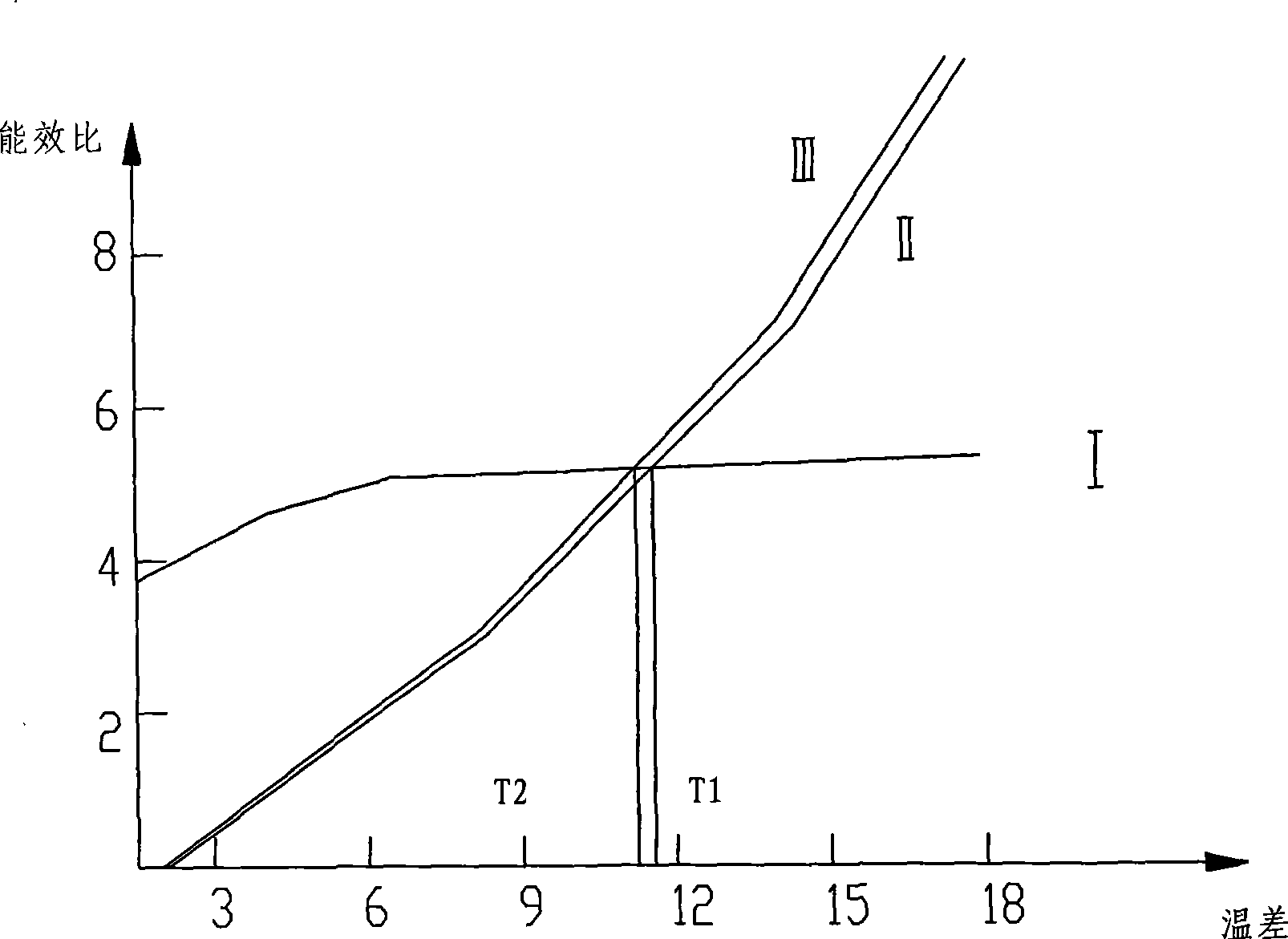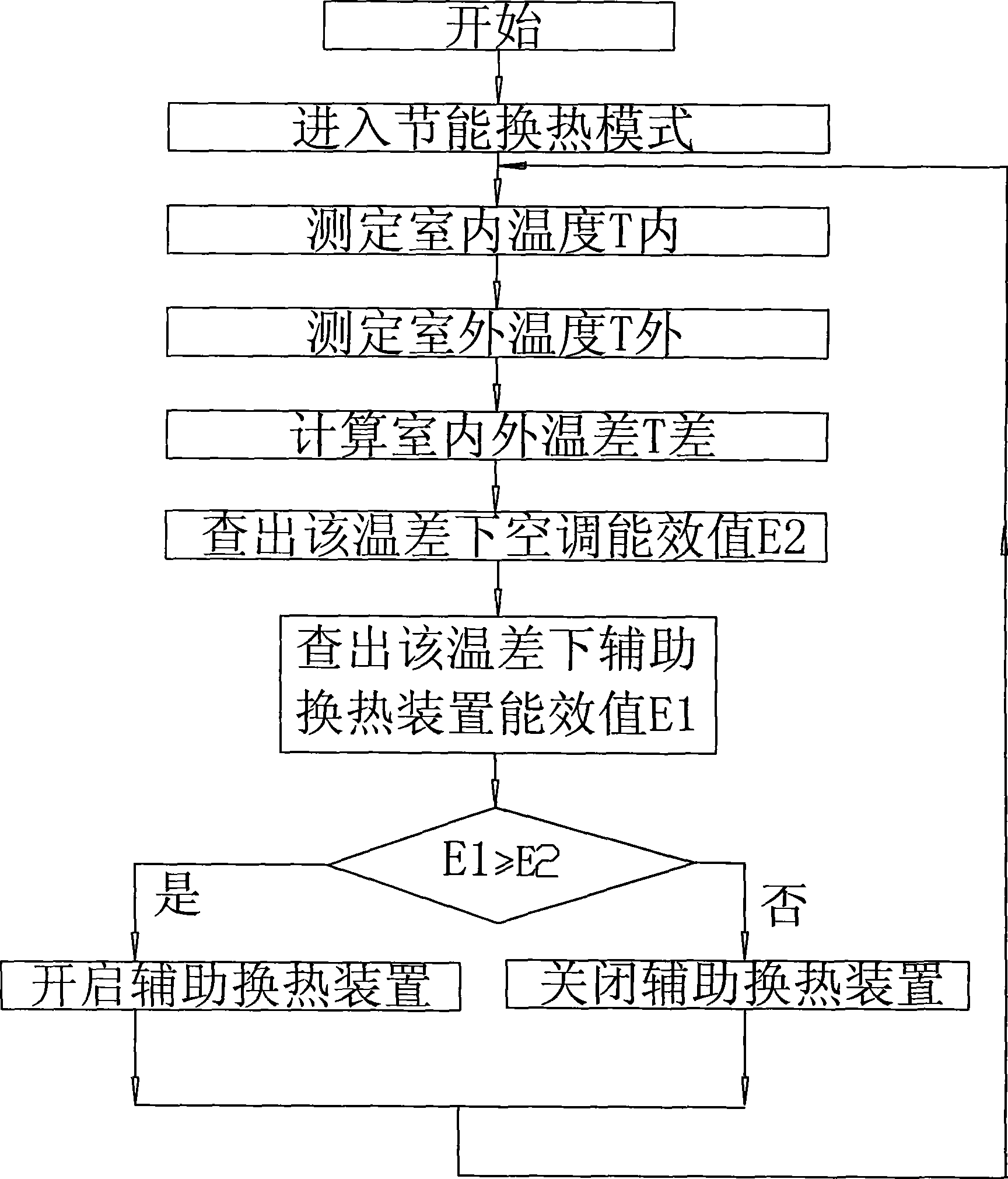Energy-saving control method for auxiliary temperature-reducing heat-exchange device of air conditioner
A heat exchange device and energy-saving control technology, which is applied in the energy-saving control of air-conditioning auxiliary cooling heat exchange devices and the control field of auxiliary cooling heat exchange devices, which can solve design difficulties, different versions, and difficulty in finding auxiliary cooling heat exchange devices, etc. problems, to achieve the effect of strengthening adaptability and versatility
- Summary
- Abstract
- Description
- Claims
- Application Information
AI Technical Summary
Problems solved by technology
Method used
Image
Examples
Embodiment 1
[0019] Embodiment 1 is an auxiliary cooling heat exchange device using the control method disclosed in the present invention. The auxiliary cooling heat exchange device is installed inside or outside the room, and includes an indoor air fan, a heat exchanger and an outdoor air fan. The two fans are respectively Drive the indoor and outdoor air to exchange heat in the heat exchanger, so that the air with a low outdoor temperature can take the heat out of the room, thereby reducing the temperature in the room. Wherein the heat exchanger is an air-air heat exchanger, including flat plate stacked heat exchangers, parallel flow channel heat exchangers, wheel air heat exchangers and heat pipe heat exchangers, preferably flat plate stacked heat exchangers and heat pipe heat exchangers switch. The heat exchanger in the first embodiment adopts a laminated flat plate heat exchanger. Such as figure 1 As shown, the abscissa in the figure is the temperature difference between indoor and ...
Embodiment 2
[0027] Embodiment 2 is an auxiliary cooling heat exchange device that adopts multiple operating modes. There are nine operating modes, that is, the wind speeds of the indoor and outdoor circulation fans are: outer high and inner high E11, outer high and inner middle E12, outer high and inner low E13, outer middle and inner high E21, outer middle and inner middle E22, outer middle and inner low E23, outer low and inner high E31, outer low and inner middle E32, outer low and inner low E33, the operation steps of the auxiliary cooling heat exchange device include:
[0028] a. Choose to enter the energy-saving heat exchange mode;
[0029] b. Measure the indoor air temperature T inside and the outdoor air temperature T outside, and calculate the temperature difference T between indoor and outdoor;
[0030] c. According to the temperature difference-energy efficiency ratio diagrams in the nine different operation modes of the auxiliary cooling heat exchange device, namely figure 2...
PUM
 Login to View More
Login to View More Abstract
Description
Claims
Application Information
 Login to View More
Login to View More - R&D
- Intellectual Property
- Life Sciences
- Materials
- Tech Scout
- Unparalleled Data Quality
- Higher Quality Content
- 60% Fewer Hallucinations
Browse by: Latest US Patents, China's latest patents, Technical Efficacy Thesaurus, Application Domain, Technology Topic, Popular Technical Reports.
© 2025 PatSnap. All rights reserved.Legal|Privacy policy|Modern Slavery Act Transparency Statement|Sitemap|About US| Contact US: help@patsnap.com



